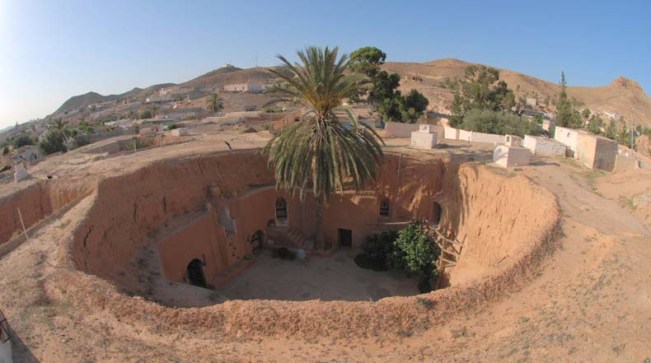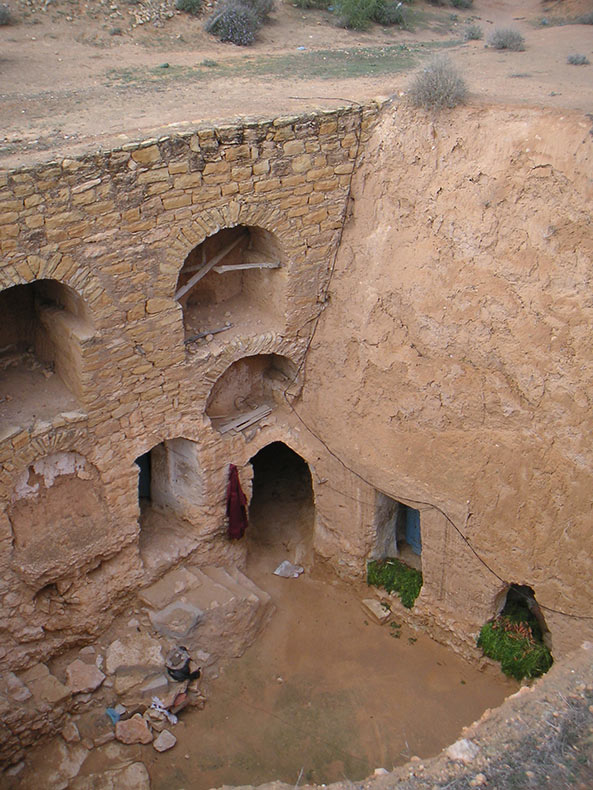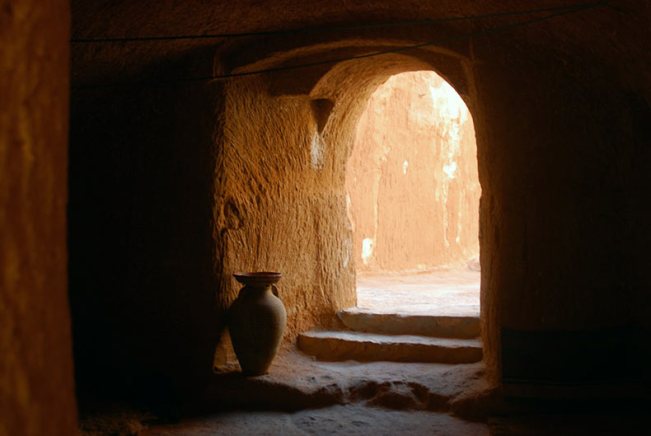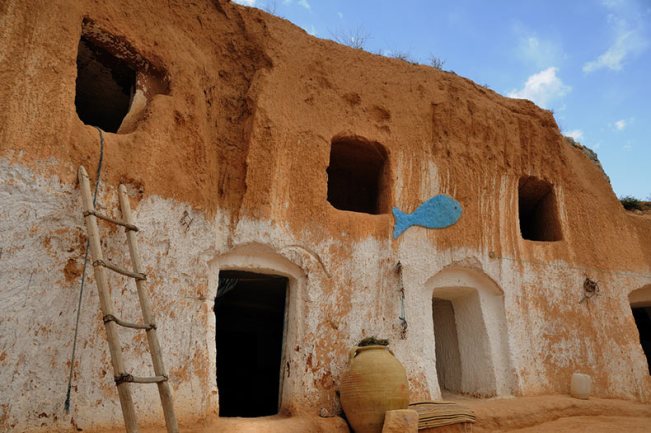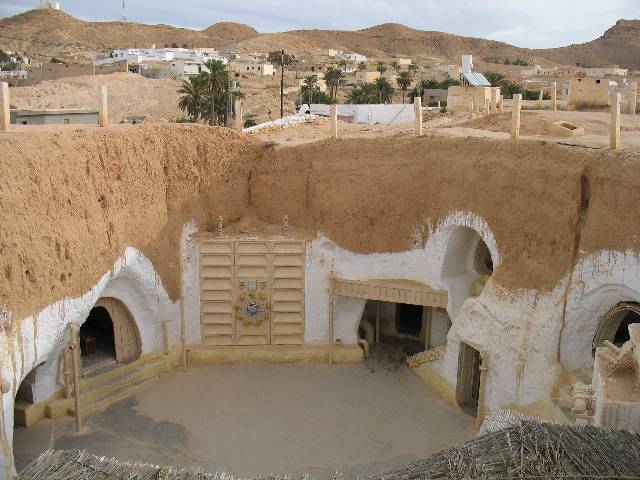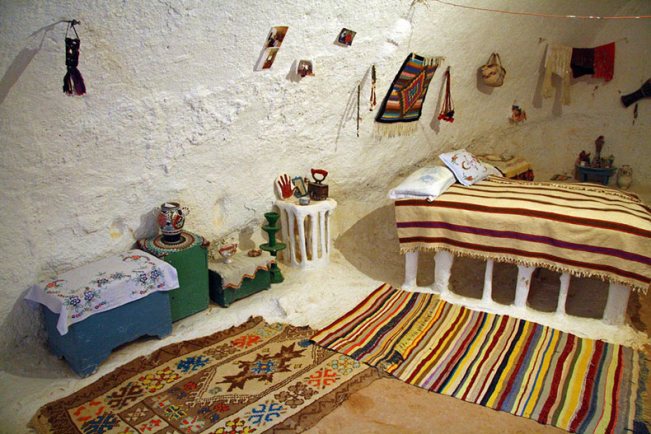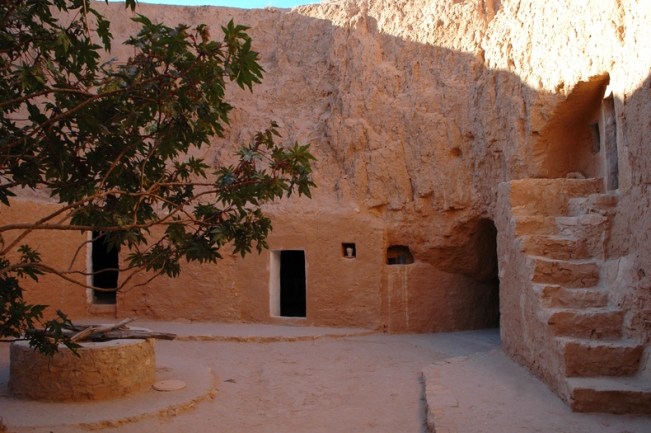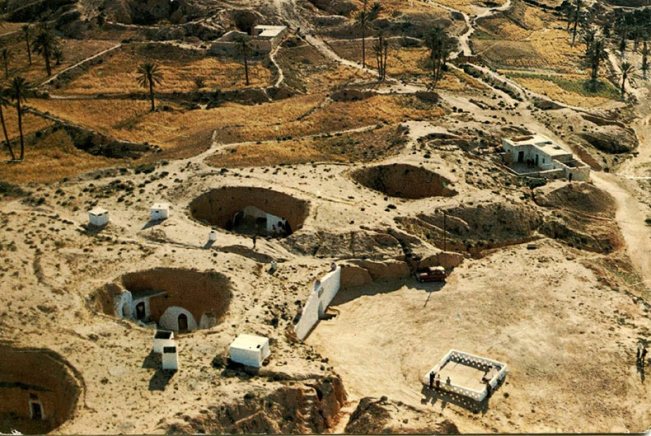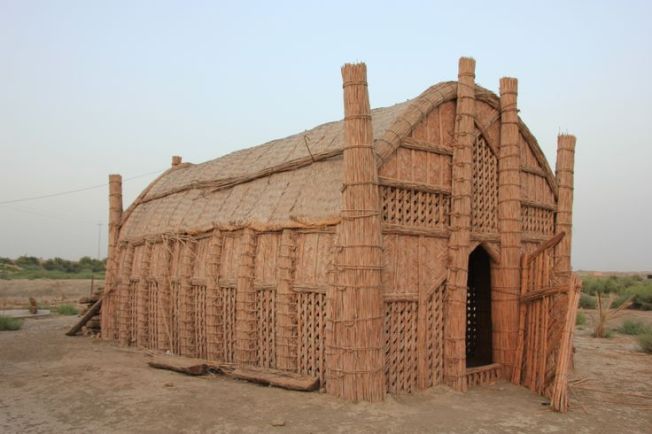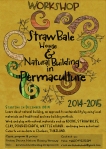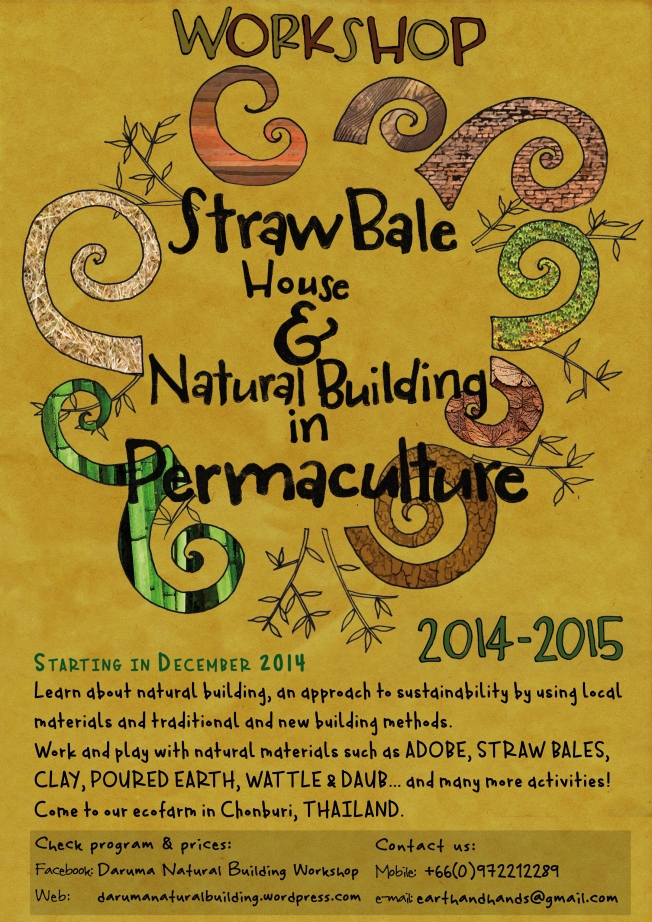Matmata, una ciudad de cuevas ubicadas a lo largo de una pequeño ciudad de habla bereber en el sur de Túnez. Algunos de los residentes locales bereberes viven en tradicionales estructuras subterráneas “trogloditas”. “Matmata” es el nombre de una de las tribus de los bereberes, que habitaban esta zona. Más tarde el nombre de la aldea era también el nombre de las personas que construyeron sus propias casas en la forma de cuevas excavadas en lo profundo con diámetros de 8-13 metros. En algunos de ellos sólo se puede ir por cuerda o escaleras hechas de cuerdas.Las estructuras típicas de la aldea son creados al cavar un gran hoyo en el suelo. Alrededor del perímetro de este pozo cuevas artificiales fueron entonces excavadas para ser utilizado como habitaciones, con algunas casas que comprenden múltiples pozos, conectados por pasajes similares a zanjas.
Imagen superior:
greenprophet.com
Imagen: congochris
El origen de este extraordinario lugar no se conoce, excepto por relatos pasados de generación en generación. Una de ellas dice que las casas subterráneas fueron construidas por primera vez en la antigüedad cuando el imperio romano envió dos tribus egipcias para hacer sus propias casas en la región de Matmata, después de una de las guerras Púnicas, con permiso para matar a todo ser humano en su camino. Los habitantes de la región tuvieron que abandonar sus hogares y cavar cuevas bajo tierra para esconderse de los invasores, pero dejaban sus refugios subterráneos en la noche para atacar a los invasores, el cual parecían ser muy eficaces en el envío de grupos de asesinos lejos de Matmata. Un mito se erigió en esos días, diciendo que los monstruos emergían de debajo de la tierra y matan a los usurpadores de tierras. En cualquier caso, los asentamientos subterráneos permanecieron oculto en la muy hostil zona durante siglos, y nadie tenía conocimiento de su existencia hasta 1967.
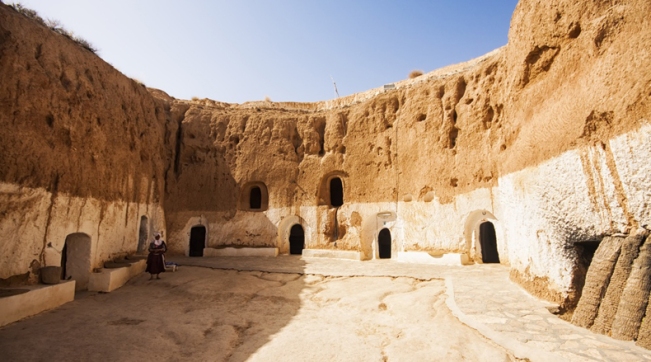
Imagen: desconocida
La manera de sobrevivir en esas severas condiciones fue difícil – ya que Túnez es famoso por la prolífica producción de aceite de oliva, los hombres iban a buscar trabajo al norte de los pueblos cada primavera, cuando comenzaba la temporada de oliva, volviendo a casa en el otoño, cuando la temporada estaba sobre ellos. Se les solía pagar en aceite de oliva, el cual intercambiaban por otros bienes, y así se proporcionaban alimentos suficientes, ropa y otras cosas para la vida normal de sus familias.
No se conocía en general hasta 1967 cuando hubo una regular cantidad de asentamientos en esta área además de errantes tribus nómadas. Ese año, las lluvias intensas que duraron 22 días inundaron las casas trogloditas y causaron que muchos de ellos colapsen. Con el fin de obtener ayuda de las autoridades, se envió una delegación al centro comunitario de la región en la ciudad de Gabes. La visita fue una sorpresa, se proporcionó ayuda, y un asentamiento sobre el suelo de Matmata fue construido. Sin embargo, la mayoría de las personas continuaron sus vidas en hogares subterráneos re-construido, y sólo unas pocas de las familias se trasladaron a las nuevas viviendas de la superficie. Hoy, Matmata es una atracción turística popular, y la mayoría de la población vive con exposiciones de turismo y folclore en sus hogares.
Como dato adicional, Matmata fue hecho conocido por servir de localización para varias escenas de la película Star Wars.
Imagen: Colin Macdonald
Imagen: Sek Keung Lo
Imagen: wikipedia – Bernard Gagnon
Imagen: Sek Keung Lo
Imagen: Ian Cowe
Imagen: wikipedia – Andy Carvin
Imagen: Malcolm Bott
Imagen: Life In Another Town
Una mujer bereber moliendo sémola fuera de su hermosa cueva en el que habita en Matmata. Imagen: Ed Wright
Imagen: Bruce Allardice
Imagen:
Imagen: congochris

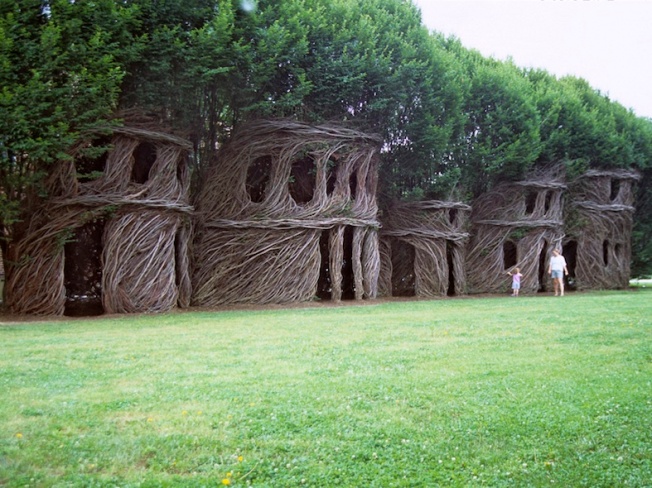
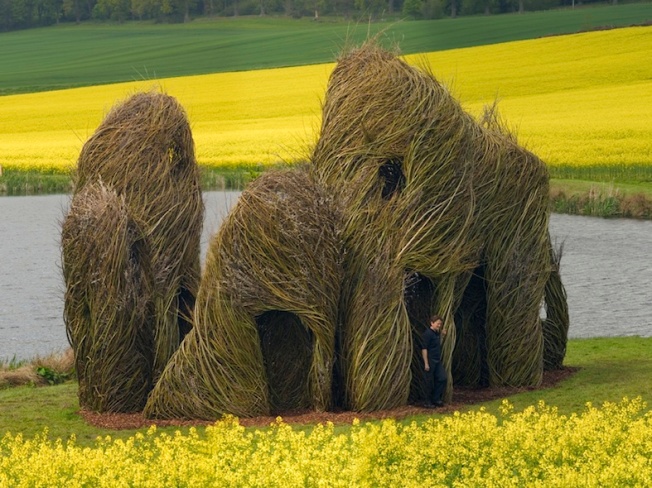




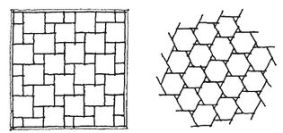
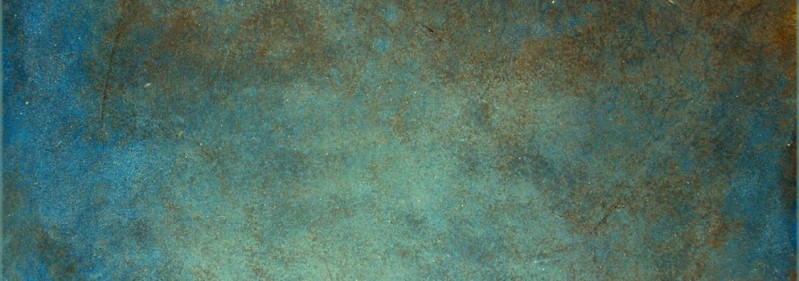
 In the human context, fermentations is the transformation of food by various bacteria, fungi, and the enzymes they produce. But it is important to recognize that fermentation is a natural phenomenon much broader than human culinary practices. Actually, cells in our bodies are capable of fermentation. Fermenting is a really old and wise way of preserving food through anaerobic processes of fermentation by lactic acid bacterias. Many cultural traditions have always used fermentation as a food preservation and a source of probiotics. Fermentation phenomena vary dramatically between the extreme of tropical heat and arctic cold. In cold climates fermentation is absolutely essential for survival, where summers becomes the time for hunting and harvesting the food will be eaten in winter when the climate will not allow these activities, and after months of fermentation process. In tropical climates fermentation is driven by the heat that produces the microbial transformations. In these cases fermentation becomes a strategy used to avoid the quick food decomposition.
In the human context, fermentations is the transformation of food by various bacteria, fungi, and the enzymes they produce. But it is important to recognize that fermentation is a natural phenomenon much broader than human culinary practices. Actually, cells in our bodies are capable of fermentation. Fermenting is a really old and wise way of preserving food through anaerobic processes of fermentation by lactic acid bacterias. Many cultural traditions have always used fermentation as a food preservation and a source of probiotics. Fermentation phenomena vary dramatically between the extreme of tropical heat and arctic cold. In cold climates fermentation is absolutely essential for survival, where summers becomes the time for hunting and harvesting the food will be eaten in winter when the climate will not allow these activities, and after months of fermentation process. In tropical climates fermentation is driven by the heat that produces the microbial transformations. In these cases fermentation becomes a strategy used to avoid the quick food decomposition. 




